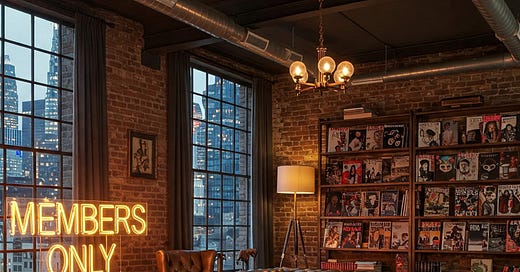How SoHo House Became the Coolest Club You Can’t Get Into
If you’ve ever wandered through New York’s SoHo or London’s Mayfair and spotted a building with an understated entrance—no flashing sign, no bouncers, just a mysterious air of exclusivity—you might have been standing in front of a SoHo House. And if you tried to walk in without a membership, well… you probably didn’t get very far.
SoHo House is not just a chain of private members’ clubs; it’s a brand that has somehow managed to make exclusivity feel effortless. It has become the place where actors, designers, and startup founders sip espresso martinis on rooftop terraces, conduct meetings over organic farm-to-table lunches, and—most importantly—network with other people who are just as cool as they are.
But how did a single townhouse in London evolve into a global network of high-end clubhouses that people are willing to pay thousands of dollars to join?
It All Started with a Restaurant
SoHo House was founded in 1995 by Nick Jones, a British entrepreneur who, at the time, ran a restaurant called Café Boheme in London’s Soho district. His restaurant attracted a very particular crowd: not the finance guys or the politicians, but the creative types—the artists, photographers, filmmakers, and magazine editors who were shaping the cultural scene of the 90s.
Jones noticed that this crowd didn’t have a dedicated space to socialize and work. Traditional members’ clubs existed, but they catered to the old-money crowd—the kind of people who wore suits and discussed stock portfolios. The creatives wanted something different. So, when the space above his restaurant became available, Jones turned it into the first SoHo House.
His concept was simple: a members-only club, but for people in creative industries. The goal wasn’t wealth; it was cultural cachet. In fact, the membership application didn’t even ask how much money you had. It asked what you did for a living. If your job title was too corporate, you were probably out of luck.
The Art of Exclusion
Now, here’s where things get interesting. Most businesses operate on a basic premise: get as many customers as possible. SoHo House? It does the opposite. It thrives on making membership difficult.
First, there’s the price. Membership fees vary widely, depending on the location and level of access. For example, at the new Portland SoHo House, an annual local membership is around $1,950, while the Every House membership, which grants access to all locations, is significantly higher.
Second, there’s the vibe. Unlike traditional country clubs, SoHo House enforces a strict no-suits policy. If you show up in a tie, you might be politely asked to loosen up. No loud business calls, no photos, no influencers filming their “day in the life.” The idea is to create an atmosphere where members feel like they’re at a private home rather than a social club.
And third, there’s the waiting list. Even if you meet all the criteria, you could still end up waiting months—sometimes years—for a spot to open up. Why? Because exclusivity is valuable. If anyone could get in, it wouldn’t be SoHo House.
The Global Expansion
Despite—or rather, because of—its exclusivity, SoHo House became wildly successful. Today, there are over 40 locations worldwide, from Berlin to Mumbai to Los Angeles. Each club is designed to blend into its surroundings while maintaining the signature SoHo House aesthetic: distressed wood, vintage furniture, artfully mismatched decor, and just the right amount of exposed brick to feel “authentic.”
But the biggest shift came when SoHo House went public. In 2021, it rebranded as Membership Collective Group and launched an IPO. The goal was to expand even further, with new locations, digital memberships, and more ways to monetize exclusivity. However, financial reports quickly revealed a problem: while SoHo House had a strong brand, it wasn’t particularly profitable. In fact, by 2024, the company had never turned a profit, with pre-tax losses forecasted to be about $73 million.
Can Cool Stay Cool?
The challenge now is maintaining the magic. Part of what made SoHo House desirable was its exclusivity, but growth requires letting more people in. To solve this, the company launched a lower-tier membership called SoHo Friends—which, for a small annual fee, offers access to certain perks, but not full club entry. It’s a way to monetize the brand without diluting the core experience.
Still, as new competitors emerge—like NeueHouse and The Ned—the question remains: Can SoHo House scale while staying exclusive? Or will it eventually become just another overpriced co-working space with better cocktails?
On top of that, the brand faces an internal power struggle. Two billionaires, Dan Loeb and Ron Burkle, are currently competing for control of SoHo House, highlighting the complexities of balancing business expansion with the brand’s elite image.
For now, SoHo House remains the ultimate status symbol for the creative class. If you get in, you’re part of an elite world. If you don’t, well… that’s kind of the point.
Join us: ➡️ Instagram | Telegram | X ⬅️




